After nearly three decades of breathtaking stunts, international intrigue, exploding gadgets, and a hero who never backs down, the Mission: Impossible franchise has officially reached its final curtain. With the release of Mission: Impossible – The Final Reckoning in 2024, Tom Cruise’s defining action saga has come to an end — and what a ride it has been.
Spanning 29 years, seven directors, six continents, and countless high-wire set pieces, Mission: Impossible became not only one of the most successful and critically respected action franchises in cinematic history, but also a living chronicle of modern blockbuster evolution — shaped, driven, and repeatedly redefined by Cruise’s singular vision and death-defying commitment.
As the final chapter closes, with an impressive ~90% Audience Score on Rotten Tomatoes, it’s clear: Mission: Impossible was never just about explosions and espionage. It was about integrity, legacy, reinvention, and above all, the thrill of doing the impossible.
I. Genesis of a Franchise: A Spy is Born (1996)
The Mission: Impossible legacy began in 1996, not as a surefire hit, but as a high-stakes experiment. Reviving a cult-favorite 1960s TV series, the film was a gamble: a cerebral spy thriller directed by Brian De Palma and produced by — then 33-year-old — Tom Cruise, who was stepping into his first producer role.
The plot was dense with deception: IMF agent Ethan Hunt, framed for the deaths of his team, goes rogue to uncover a traitor in his own ranks. The film’s twist-heavy narrative, stylized cinematography, and iconic moments (especially the CIA vault drop) set the tone for what would become a franchise rooted in paranoia, precision, and pulpy fun.
It grossed over $450 million worldwide and proved one thing: Cruise wasn’t just a leading man. He was a brand.
II. The Evolution of Impossible: Reinventing the Spy Thriller
Where most franchises stick to a formula, Mission: Impossible evolved by reinventing itself with every installment. Each new director brought their own style, turning the series into a cinematic anthology of action innovation.
🎬 Mission: Impossible II (2000) – John Woo’s operatic vision
Slow-motion doves, leather jackets, and gravity-defying motorcycles. Often cited as the weakest entry, Woo’s stylized sequel emphasized spectacle over substance — yet introduced a more romantic, mythic Ethan Hunt.
🎬 M:I III (2006) – J.J. Abrams’ emotional reset
Abrams added personal stakes by introducing Julia, Ethan’s wife, and humanized the spy fantasy. M:I III also gave us Philip Seymour Hoffman’s chilling villain, and paved the way for serialized storytelling.
🎬 Ghost Protocol (2011) – Brad Bird’s visual playground
The Burj Khalifa sequence changed everything. Bird’s animation background infused the film with kinetic energy and global flavor, re-establishing M:I as the most physically ambitious action franchise on Earth.
🎬 Rogue Nation (2015) – The McQuarrie era begins
Christopher McQuarrie, Cruise’s most trusted collaborator, brought depth, coherence, and long-form storytelling. The Syndicate, a rogue network of former agents, became the IMF’s greatest threat.
🎬 Fallout (2018) – Action as art form
Often hailed as the best action movie of the decade, Fallout blended world-threatening stakes with intimate character drama. From HALO jumps to helicopter chases, the film pushed Cruise — and cinema — to new limits.
III. The Final Reckoning: Endgame for Ethan Hunt
The franchise’s swan song, Mission: Impossible – The Final Reckoning (2024), was designed as a two-part epic, finally closing the chapter on Ethan Hunt’s arc. And while plot details were closely guarded, the themes that emerged were powerful:
-
Mortality: Ethan finally confronting the cost of his loyalty to the IMF.
-
Legacy: Old ghosts from M:I I and M:I III re-emerge, tying threads from across the franchise.
-
Redemption: Longtime ally Ilsa Faust (Rebecca Ferguson) and frenemy Gabriel (introduced in Dead Reckoning) reach their dramatic conclusions.
Most notably, Cruise reportedly performed his most dangerous stunt ever — an underwater escape sequence combined with zero-gravity free-fall filmed using minimal CGI. The scene alone is already considered a landmark of practical effects.
The film was met with strong acclaim, particularly from fans, who awarded it an audience score hovering around 90% on Rotten Tomatoes. Critics praised it for offering an emotionally resonant farewell, paying tribute to both the character and the man behind him.
IV. The Man Behind the Mask: Tom Cruise, The Last Movie Star
It’s impossible to separate Mission: Impossible from Tom Cruise himself. In an age when actors are often interchangeable and studios favor brands over individuals, Cruise turned M:I into a one-man crusade to save the blockbuster.
He did what few others dared:
-
Performed his own stunts — including climbing the Burj Khalifa, hanging from an airplane, halo-jumping from 25,000 feet, and free-climbing cliffs.
-
Reinvented action storytelling by collaborating deeply with directors and emphasizing in-camera effects over CGI.
-
Pushed for theatrical releases during a streaming-dominated era, often delaying his films to preserve the cinema-first experience.
In the process, he redefined what it meant to be an action hero — not as invincible, but as driven, fallible, and unyielding. Cruise didn’t just play Ethan Hunt. He was Ethan Hunt: obsessed with doing the right thing, no matter the cost.
V. The IMF Family: Heroes Beyond Hunt
One of the franchise’s greatest strengths has been its ensemble cast, creating a spy team audiences truly came to care about:
-
Luther Stickell (Ving Rhames) – The calm, loyal tech expert who’s been by Hunt’s side since day one.
-
Benji Dunn (Simon Pegg) – Comic relief turned emotional anchor. Pegg gave Benji heart and humanity.
-
Ilsa Faust (Rebecca Ferguson) – Arguably the franchise’s deepest character. A conflicted spy whose chemistry with Hunt redefined action romance.
-
Julia Meade (Michelle Monaghan) – A reminder that Ethan once wanted a normal life — and what he sacrificed to save the world.
The final film gave these characters fitting farewells, honoring the relationships that gave emotional weight to every mission.
VI. Themes That Made It Timeless
Beyond the stunts and gadgets, Mission: Impossible built its legacy on themes that deeply resonated with audiences:
-
Trust in a world of betrayal
-
Moral clarity in morally gray landscapes
-
Loyalty over bureaucracy
-
Human ingenuity over digital omnipotence
-
The individual vs. the institution
In a time where tech threatens to replace everything, Mission: Impossible insisted on human hands doing impossible things. It was both analog and epic — grounded in sweat, gravity, and grit.
VII. What Comes Next: Legacy and Influence
With the franchise concluded, the impact of Mission: Impossible will continue to ripple across pop culture:
-
The series revived the spy genre alongside Bond and Bourne, often outpacing them in originality and scale.
-
It elevated the importance of practical effects in an era drowning in VFX bloat.
-
It restored the idea that films should be experienced — not just consumed.
New franchises like John Wick, Extraction, and even Top Gun: Maverick owe their DNA to M:I’s precision storytelling and Cruise’s producer-driven model.
And perhaps most importantly: It reminded filmmakers that blockbusters can be smart, exciting, and emotionally resonant — all at once.
Conclusion: A Mission Truly Accomplished
After 29 years, seven death-defying sequels, and one of the most dedicated performances in Hollywood history, Mission: Impossible has earned its rest — not in a whisper, but in a roar that will echo in cinema history.
The fuse has finally burned down. The mission is complete. And Ethan Hunt — like Tom Cruise — leaves behind a legacy defined not by fame, but by devotion, courage, and a willingness to go where no one else would dare.
Goodbye, Ethan. You didn’t just choose to accept the mission.
You made it unforgettable. 🎬🔥🕶️💣

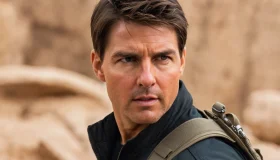
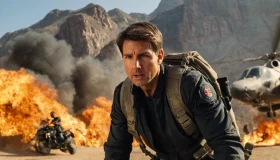
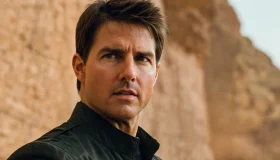
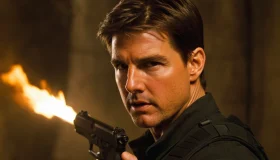
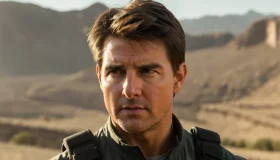
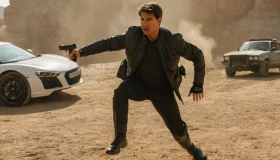
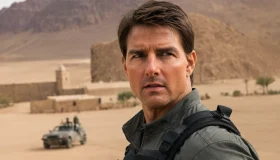
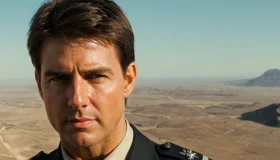
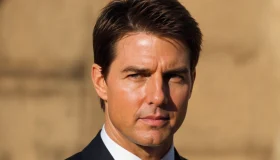
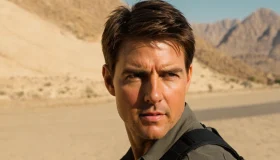
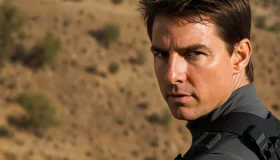
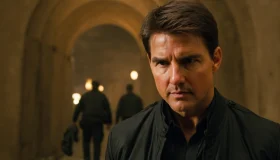

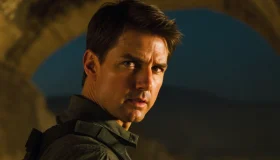
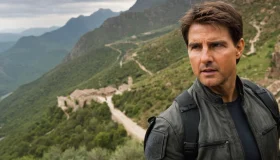
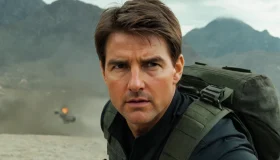
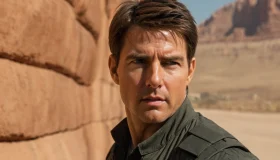
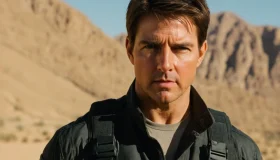
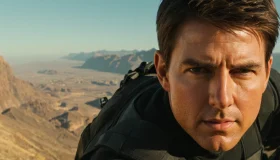
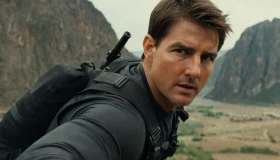
Does he get killed by
lord zenu at the end?